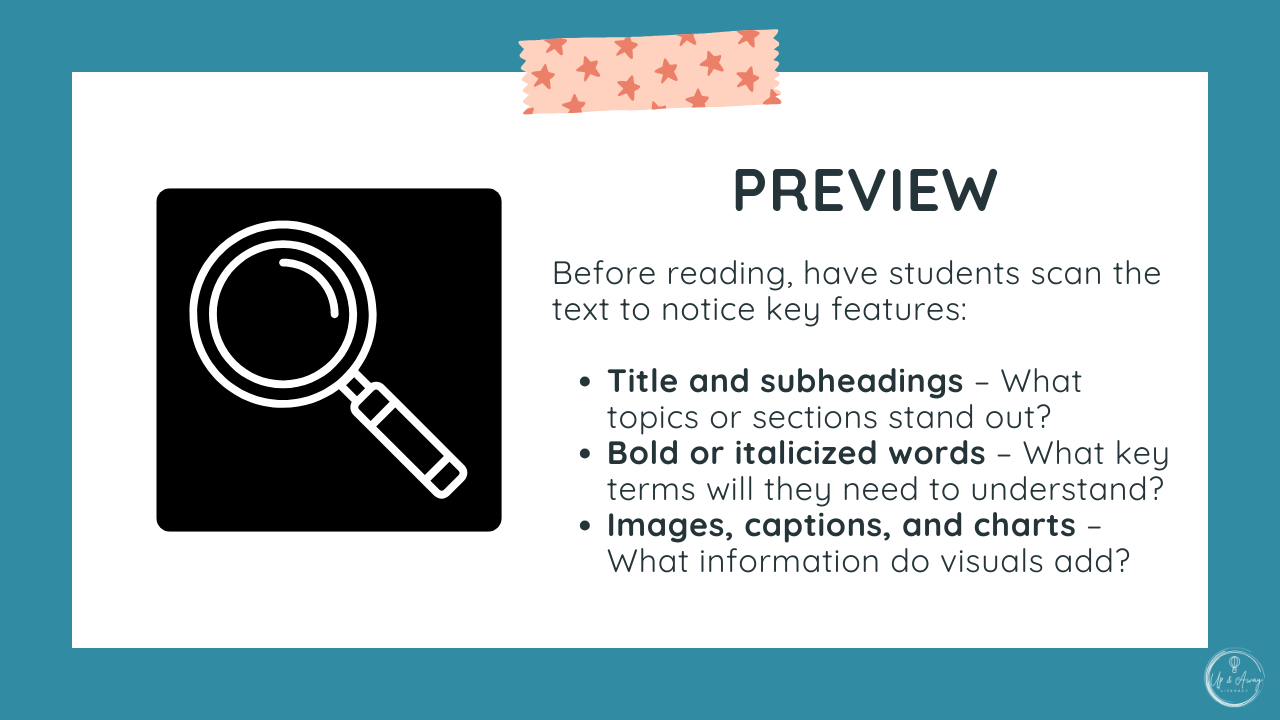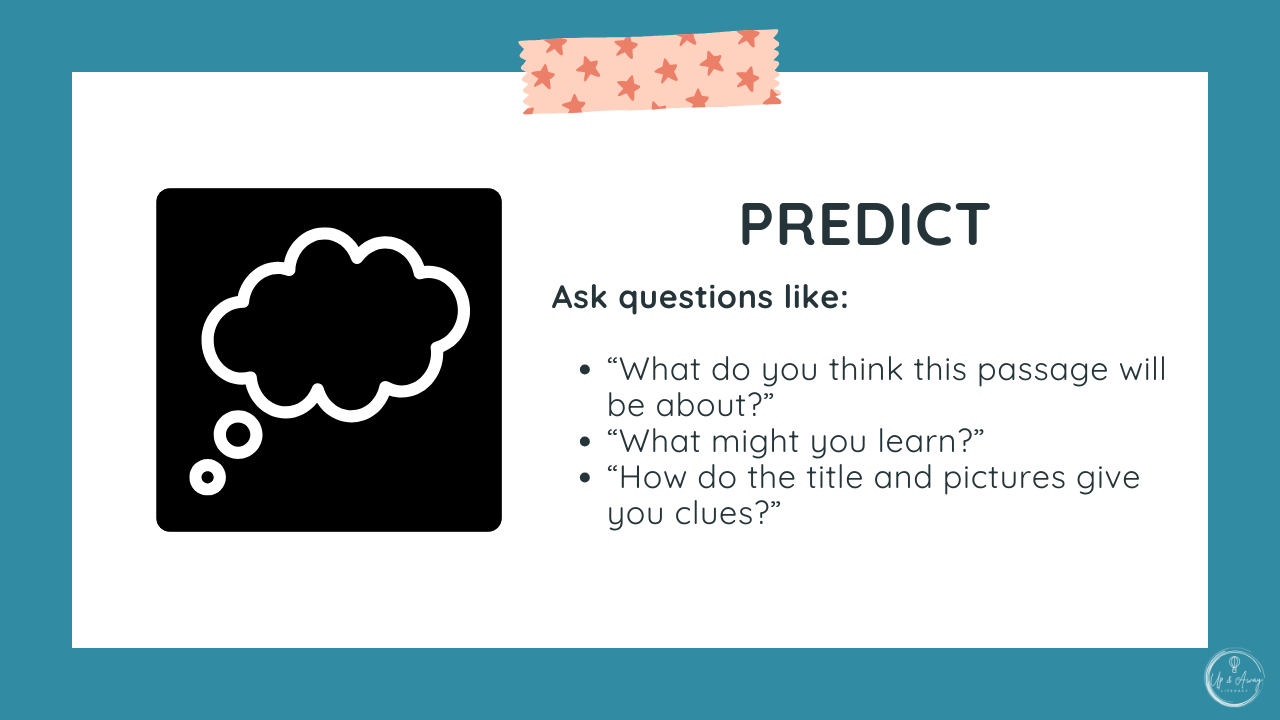
Building Strong Readers: What to Do When a Student Struggles with Comprehension
(Note: This is Part 6 of an 8-week blog series called Building Strong Readers. To read the rest of the series click HERE)
We've all had students who can read a passage fluently—accurate decoding, smooth phrasing, expressive voice—yet struggle to explain what the text was about. This common scenario highlights the difference between reading the words and understanding the text.
In this post, we’ll take a closer look at what comprehension involves, why it can be challenging for some students, and evidence-based ways to support young readers in developing strong comprehension skills that lead to deeper understanding.
What Is Comprehension?
Comprehension is the ability to understand, interpret, and make meaning from what we read. It goes beyond simply recognizing and decoding words on a page. True comprehension involves connecting new information to what a reader already knows, making inferences, visualizing, and monitoring one’s own understanding.
In other words, comprehension is an active, thinking process that happens before, during, and after reading. It requires the integration of multiple skills, including vocabulary knowledge, background knowledge, language comprehension, and higher-order thinking.
When students develop strong comprehension skills, they are able to engage deeply with texts, draw conclusions, and apply what they learn in new contexts.
Signs A Student Struggles With Comprehension
Some red flags that a student may have difficulty with comprehension include:
-
Can decode words but doesn’t understand what they’re reading
-
Struggles to answer literal questions (What happened? Who? Where?)
-
Has difficulty with inferential questions (Why did it happen? How did the character feel?)
-
Cannot retell or summarize the text in their own words
-
Shows limited vocabulary knowledge or background understanding of topics
Comprehension Skills vs. Strategies
Before we dive into how to help students who struggle with comprehension, let's explore the difference between the terms comprehension skills and comprehension strategies. These terms are often confused, but are very different things. Take a look at the table below and then we'll discuss the differences a little further.
To better understand the differences between skills and strategies, let's look at how our understanding of how readers make meaning from text has transformed over the past several decades.
Early Reading Instruction
Early reading instruction often focused on isolated skills — like finding the main idea or identifying cause and effect — as if comprehension were simply the mastery of these discrete abilities. However, research revealed that this “mention, practice, assess” approach did little to teach students how or when to use these skills.
Introduction of Cognitive Science
Cognitive scientists began studying how the mind works — how people think, learn, and construct meaning. Their research showed that reading is not a passive act of skill application, but a complex, active process of constructing meaning. Effective reading is interactive (involving the reader, text, and context), strategic (driven by purpose and choice), and adaptable (changing with text type and reading goal).
Studies show that good readers are strategic thinkers who use a range of mental processes before, during, and after reading.
- BEFORE reading, they set goals, preview the text, and make predictions
- DURING reading, they decode fluently, connect ideas, ask questions, make predictions, and use background knowledge to clarify meaning. They monitor their understanding, adjust strategies when something doesn’t make sense, and visualize or summarize key points.
- AFTER reading, they reflect on what they’ve learned or seek additional information.
In short, strong readers use comprehension strategies, which are intentional actions like questioning, summarizing, and predicting, to build understanding. They also demonstrate metacognition, or awareness of their own thinking, which helps them select and apply the right strategies for each reading task.
What To Do When Students Struggle With Comprehension
If you're anything like us, most of our time used to be spent teaching the strategies for during and after reading. Prior to reading the text, we may have briefly discussed the title and made a prediction but that was about it. Time is of the essence, right?! We were so crunched for time that we barely glossed over the pre-reading strategies and just dove right into reading.
However, after researching how to best support our students who struggled with comprehension, we realized the importance of time spent before reading.
The use of pre-reading strategies help students to:
-
Activate prior knowledge
-
Build curiosity and motivation
-
Set a mental framework for new information
-
Focus on what matters most
The 3 P's: A Comprehension Pre-Reading Strategy
To help remind students of these pre-reading strategies, we developed the 3 P's strategy: PREVIEW, PREDICT, PREPARE.

We started to encourage our students to slow down, preview the text, make predictions, and get prepared. This intentional practice paid off in big ways! Our students were more engaged in the text and their comprehension made noticeable improvements. Here's how the 3 P's work:

1. PREVIEW the Text
Previewing helps students organize upcoming information and anticipate structure before they dive in. Before reading, have students scan the text to notice key features:
-
Title and subheadings – What topics or sections stand out?
-
Bold or italicized words – What key terms will they need to understand?
-
Images, captions, and charts – What information do visuals add?
Instructional Tip: Model this process by thinking aloud:
“The title says ‘Life in the Desert.’ I see bold words like ‘adaptations’ and ‘survival.’ This must be about how animals and plants live in dry environments.”

2. PREDICT What the Passage Will Be About
Prediction engages the brain’s natural curiosity. When students make predictions, they set a purpose for reading, and confirm or adjust their ideas as they go.
Ask questions like:
-
“What do you think this passage will be about?”
-
“What might you learn?”
-
“How do the title and pictures give you clues?”
Instructional Tip: Encourage students to write down or share their predictions before reading. Afterward, have them revisit their predictions to see which were accurate. This reflection deepens comprehension and reinforces metacognitive awareness, a hallmark of skilled readers.
3. PREPARE for the Questions
Before students begin reading, guide them to preview the questions they’ll need to answer afterward.
When students know what to look for, they read with intentional focus. This strategy aligns with research showing that readers retain more information when they have a clear purpose.
Instructional Tip: Project comprehension questions or prompts and discuss them:
“The question asks ‘How does the author show that bees are important to plants?’ So as we read, let’s look for clues about how bees help plants grow.”
This simple act primes students’ attention, making it far more likely that they’ll notice critical information during reading.
3 P's Teaching Resource
If you're looking for a done-for-you resource for teaching the 3P's strategy, look no further! We've put together everything you need to teach this strategy to your students, and to give them multiple opportunities to practice.
This resource includes:
- 3 P's Strategy Anchor Chart
- 5 nonfiction titles written about fall-themed topics
- Each title comes with 2 versions: Version A- written on a 1st-2nd grade level, Version B- written on a 2nd-3rd grade level. Each version has the same title and questions, just different difficulty levels of text for easy differentiation!
- Passages and practice are in a booklet format. Just print double sided, and fold in half.
- The front page of every booklet contains a 3 P's checklist to remind students to do each pre-reading strategy before reading the text.
To learn more about what's included, click HERE or the image above! (Also available in our growing library of resources, Launching Literacy)
Tools to Support Instruction of Pre-Reading Strategies
-
Anchor charts for Preview, Predict, Prepare
-
Text feature scavenger hunts
-
Graphic organizers for predictions
-
Pre-reading question cards or digital prompts
-
Sentence starters (e.g., “I think this text will be about…” or “I notice that…”)
For Teachers: Tips to Maximize Impact
-
Model often. Think aloud as you preview, predict, and prepare.
-
Use a gradual release approach. Move from teacher-led to student-led prereading routines.
-
Connect to background knowledge. Invite students to share what they already know about the topic.
-
Keep it brief but consistent. Just a few minutes before reading can make a huge difference.
-
Integrate across subjects. Use prereading in science, social studies, and math texts — not just ELA.
Final Thoughts
Strong readers don’t just start reading, they get ready to read. By teaching students to Preview, Predict, and Prepare, we equip them with the tools to enter a text with curiosity, purpose, and confidence.
These strategies will help students build the mental framework that turns words into understanding, and understanding into lasting learning.
Building Strong Readers Reference Sheet (FREE DOWNLOAD!)
If you would like a printable version of these reading skills and strategies to apply when you spot a weakness, click the image below to download our free Building Strong Readers Reference Sheet!
The Resources You Need, All in ONE Membership!
We understand that purchasing resources one by one adds up fast—and as teachers, we know every dollar matters. That’s why our K-2 membership, Launching Literacy, is a smarter and more cost effective option. Our membership gives you everything you need for small group instruction—all in one place—so you can save time, money, and stress.
No more weekends wasted hunting for Science of Reading–aligned heart word resources, phonics lessons, and decodable texts. With Launching Literacy, you simply log in, choose the skill you want to teach, and instantly download detailed, ready-to-use lesson plans and activities.
In just a few clicks, your small group lessons are prepped and ready to teach—so you can spend less time planning and more time making an impact in your classroom. It’s planning made simple, effective, and affordable.![]()
We hope that you found this blog post helpful! Whether you choose to join the membership or not, we are always here to help you in any way we can. Send us an email at: [email protected] with any questions you have!
Stay in-the-know!
New tips, courses, and resources delivered straight to your inbox. Sign up for our email list below so you don't miss a thing!




